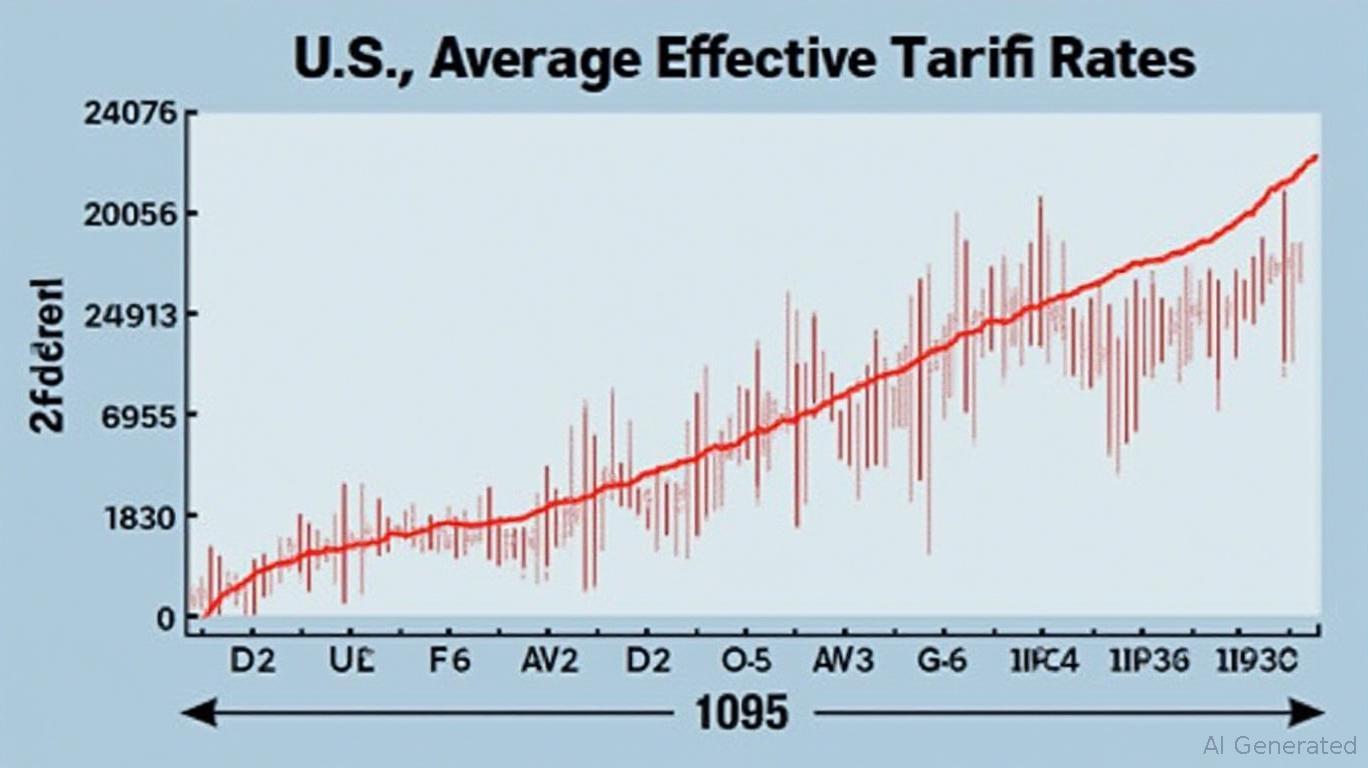Sustaining the Stock Rally: Technical Breakouts vs. Tariff Risks
The S&P 500’s recent surge above its critical 200-day moving average (DMA) has sparked optimism, but the path forward is fraught with technical and geopolitical pitfalls. Investors now face a pivotal question: Can the rally sustain momentum, or will tariff-driven volatility derail gains? This analysis dissects the S&P 500’s technical inflection point, the risks tied to trade policies, and why Nike’s (NKE) breakout offers a microcosm of opportunities—and perils—in trade-sensitive sectors.
Ask Aime: Can Nike's (NKE) breakout be sustained in a tariff-driven market?
The 200-Day Moving Average: A Make-or-Break Threshold
The S&P 500’s 200-day DMA, currently around 5,750, is a linchpin for the market’s recovery narrative. On May 12, the index closed at 5,835, marking a decisive break above this critical level—a move analysts at LPL Financial call a “pivotal test” for the rally’s longevity.
Ask Aime: "Can the S&P 500's rally sustain momentum, or will tariff-driven volatility derail gains? Analyze the 200-Day Moving Average's significance."
Historically, sustained closes above the 200-day DMA have signaled durable recoveries, but risks linger. LPL’s Adam Turnquist warns that post-15% corrections often see further declines of 18–19% within 12 months—a warning given the S&P’s 5.5% retracement from its April low. For now, the break above 5,750 has ignited institutional buying, but investors must monitor two key zones:
- Resistance: The 5,900–5,950 zone, where the 50-day DMA and prior resistance could test momentum.
- Support: A retest of 5,750 would invalidate the breakout, triggering a wave of profit-taking.
Nike’s Ascending Triangle: A Bullish Signal, But Not Without Hurdles
Nike’s stock provides a textbook case of how trade dynamics shape sector performance. After a 37% plunge in early 2025, NKE formed an ascending triangle pattern, a bullish consolidation signaling institutional accumulation. The stock broke out above resistance at $63 in mid-May on strong volume, aligning with Fibonacci retracement levels and RSI crossover into bullish territory.
Ask Aime: Can the S&P 500's recent surge sustain?

- Near-Term Targets: A close above $63 opens doors to $71 (61.8% Fibonacci retracement) and $79 (June 2023 resistance).
- Support Watch: The $59 zone (former resistance turned support) is critical—if held, it reinforces the bullish trend. A drop below $57.43 could trigger a slide toward $50–$52, key long-term lows.
Nike’s rebound is tied to the U.S.-China tariff truce, which reduced production costs (China accounts for 15% of its revenue). However, broader risks loom: Vietnam’s 46% tariffs and logistical bottlenecks threaten margins, while competitors like ONON (On Holding AG) pressure pricing power.
Trade Risks: The Sword of Damocles Over Sectors
The apparel sector epitomizes the risks tied to shifting trade policies. U.S. tariffs on Vietnam and China—now at 46% and 54%, respectively—have pushed sourcing costs to unsustainable levels. Brands face a grim choice: absorb margins or pass costs to consumers in a market where confidence is at pandemic lows.
- Inventory and Logistics Crunch: Ocean freight rates from China to the U.S. are up 20%, with port delays mirroring 2020’s peak.
- De Minimis Collapse: The end of the $800 de minimis exemption for Chinese goods has forced e-commerce giants like Shein to absorb 20% price hikes.
Actionable Insights: Timing the Rally and Navigating Volatility
Investors must balance the S&P’s technical optimism with sector-specific risks:
- Monitor the S&P 500’s 200-Day DMA:
- A sustained close above 5,850 validates the breakout; a breach below 5,750 signals a downward shift.
Use 5,750–5,800 as a stop-loss zone for aggressive bets.
Sector Divergence is Key:
- Buy the dip in trade-sensitive names like Nike if they hold $59 support, but avoid chasing rallies above $71 without volume confirmation.
Avoid lagging sectors: Utilities and real estate, which underperformed during the S&P’s rebound, may remain vulnerable to rising rates.
Tariff Watch:
- The 90-day tariff pause ends in late August—position for volatility. If tariffs are extended, sectors like apparel and tech could see renewed selling.
Conclusion: A Rally with Expired Expiration Date?
The S&P’s technical break above 5,750 has bought time for optimism, but the road ahead is littered with tariff-induced potholes. Nike’s breakout exemplifies the dual narrative: a stock can thrive on technical momentum and policy relief, yet remains hostage to macro headwinds.
Investors should act decisively but selectively:
- Aggressive buys: NKE below $59, with targets at $71 and stops at $55.
- Index plays: SPY ETFs if the S&P holds above 5,750, with a focus on reflation trades (energy, industrials).
- Cash reserves: Keep 15–20% dry powder for dips below critical support levels.
The rally has legs—but they’re attached to a clock.

_b905d9341749265671656.jpg)








